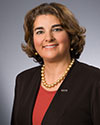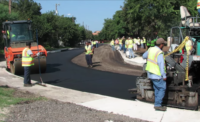ENR interviewed Diana Mendes, national rail/transit sector leader for HNTB, for the February cover story on mass transit trends. Below are excerpts, condensed and edited, from the interview.
 |
| Diana Mendes |
What is your view on the state of U.S. transit construction?
It’s a pretty exciting time. The people have spoken. On Nov. 8 they sent a clear message that they are willing to pay for multimodal transportation systems. For so many years we were stuck in road versus transit, bus versus rail wars. Now people are recognizing it takes a multimodal system and that choices are important.
I think the other thing that is interesting—HNTB did a survey on transit-oriented development. The results were that nearly 3 of 4 surveyed Americans support changes in land use and regulations. It makes discussion about transit not just about the mode of travel but also about the health of the community and economic opportunities and quality of life.
What types of transit modes are the most popular?
The activity is spread across the country. There is bus rapid transit from coast to coast. It’s very popular in smaller communities. Streetcars are seen as economic development tool. It’s not always the transit provider who is the project sponsor. A lot of that ownership comes from local municipalities.
How is technology helping to shape transit projects?
Transportation has traditionally been one of the slowest-changing industries. Just think how we traveled only 100 years ago – we had walking, bikes, horses, cars, trains. Now no more horses. But technology is one of the fastest-changing fields, and it is intersecting with transportation. The first aspect is the use of big data. We have computing powers that can help us understand transportation needs better than just with observed behavior. That can help us fine-tune investments and assure return on investment. Second, technology provides support to a variety of lifestyles, for example whether we commute or work from home.
What about high-speed/intercity rail?
For All Aboard Florida, we are doing design work and some PM functions. We’re also working on California high-speed rail. It just has so much potential to change the spatial geography of our country when you pair up that intercity service with local transit systems and use of rideshare and on-demand services.
What about the advent of automated vehicles?
The time is now for AVs to come into play. What does that mean in terms of regulations and land use? What if we are not using land to [store] cars? A lot more resources can then go to enhancing quality of life.






Post a comment to this article
Report Abusive Comment